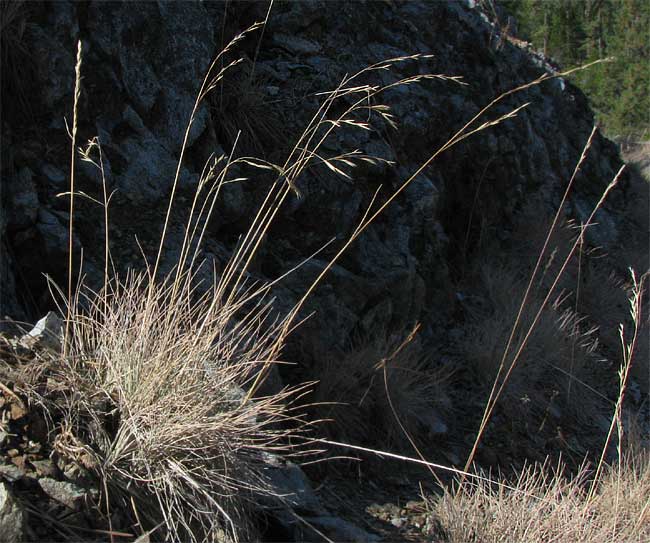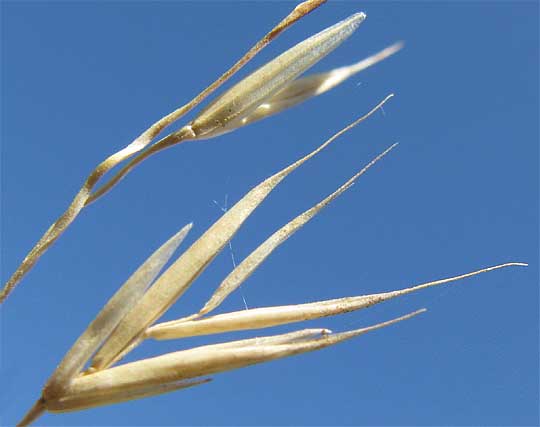Excerpts from Jim Conrad's
Naturalist Newsletter

from the the August 23, 2009 Newsletter, issued from the Siskiyou Mountains west of Grants Pass, Oregon:
KLAMATH FESCUE
Trees here are green but the forest's herbaceous understory is the color of old, dry hay, crisp and brittle. It's the late dry season so this is the way it's supposed to be. Sometimes when I see all the dry, curled-up grass in large serpentine barrens as I pass by I can't help but think that if someone down in the valley should set a match to it I'd be in a heap of trouble.
On many dry slopes about the only plant species in evidence is the straw-colored bunchgrass shown above.
That's... *UPDATE: In 2009 I identified this as Idaho Fescue, Festuca idahoensis, which it certainly looks like. However, in 2024 when this page's images were uploaded to iNaturalist, user "sedgequeen," an expert in Oregon sedges, recognized the very similar Klamath Fescue, FESTUCA ROEMERI var. KLAMATHENSIS, remarking that this variety is a "West-side equivalent of F. idahoensis," a taxon first published in 2007. Earlier, in 1998, it had been published as F. idahoesis subsp. roemeri, and before that it was just considered part of the normal variation of our Idaho Fescue. Before 2007, our grass was indeed an Idaho Fescue, but not now.
Klamath Fescue is distributed from western. Canada to California.
Below a close-up shows its 2/3-inch long (15 mm) spikelets:

What a pleasure identifying this species, sitting in the mountain sunlight cross-legged thrusting my mind into the flowers' geometry, their proportions, textures and designs. For example, a very closely related fescue also common in this area is the California Fescue, but its needle-like "awns" aren't nearly as long as shown here. Also, with a little imagination, at the base of the awns in the picture you can just barely see a roughness -- a "scabrosity," a botanists would be pleased to say. California Fescue lacks scabrosity there. With my handlens the scabrosity is clearly visible. Also, California Fescue's flower cluster, or inflorescence, is more open than Idaho's.
By the way, a clump of bunchgrass such as that in the picture can be called a "genet," a term used for any clonal colony -- where all the seeming individuals share the same genetic makeup because they derive from the same mother cell.